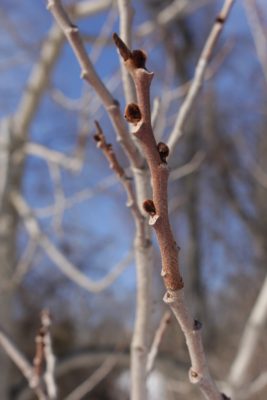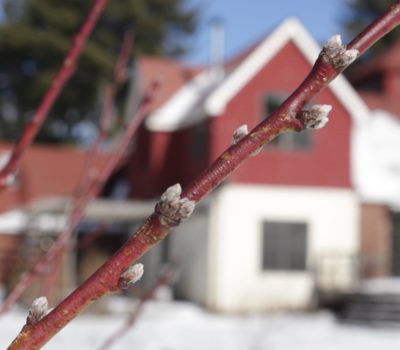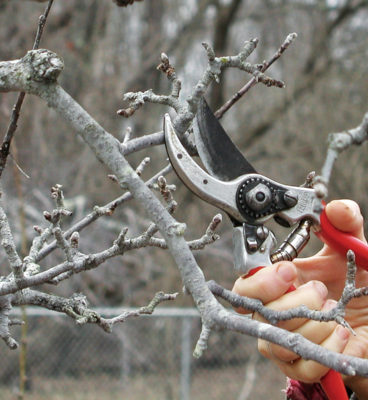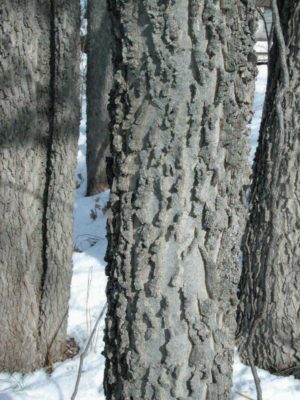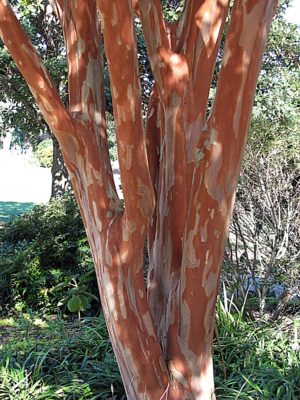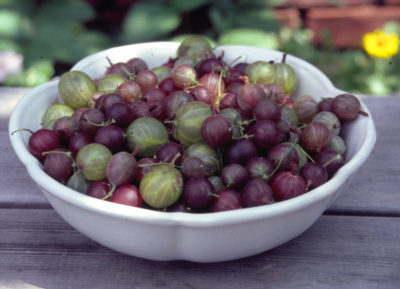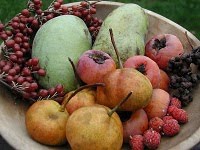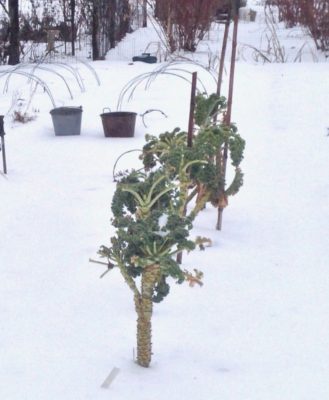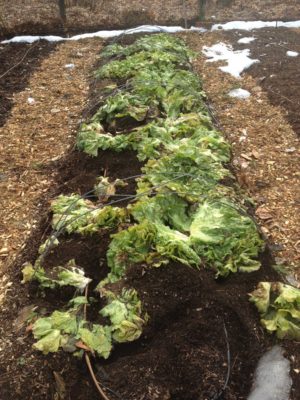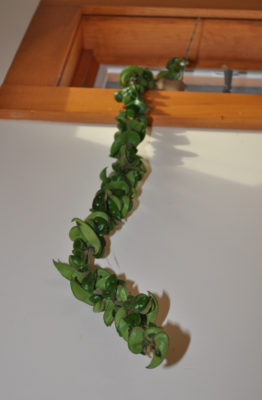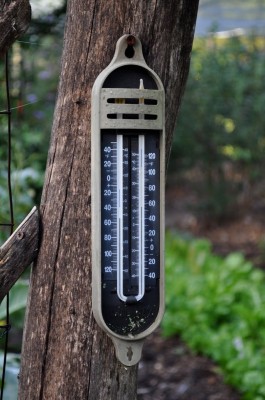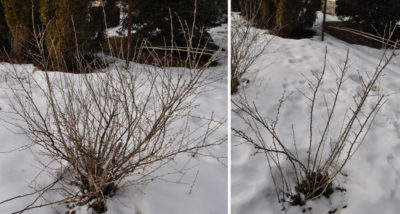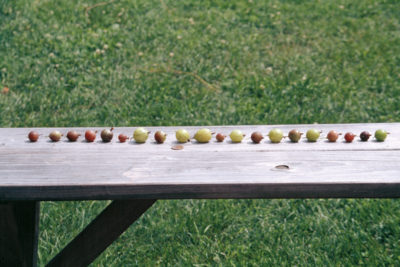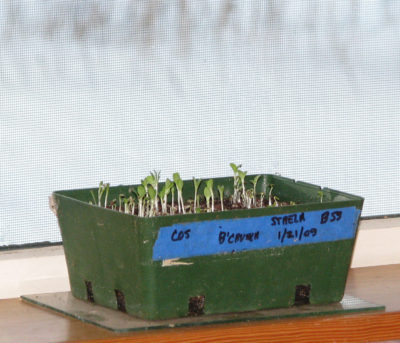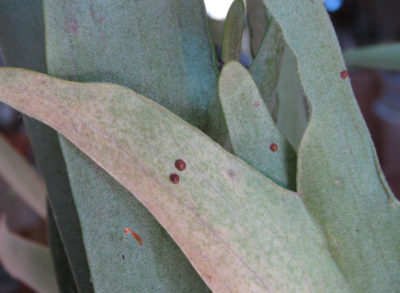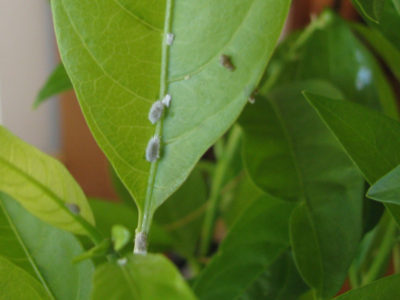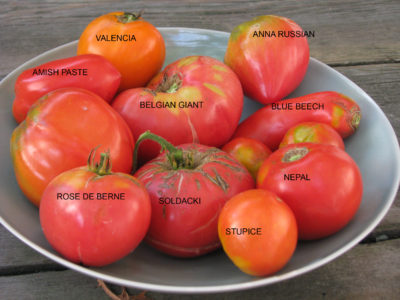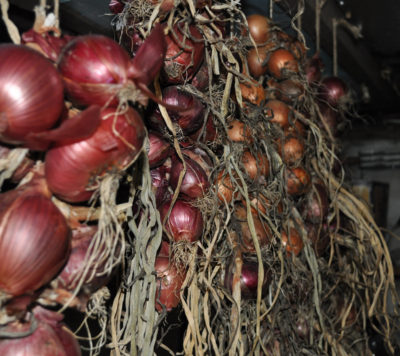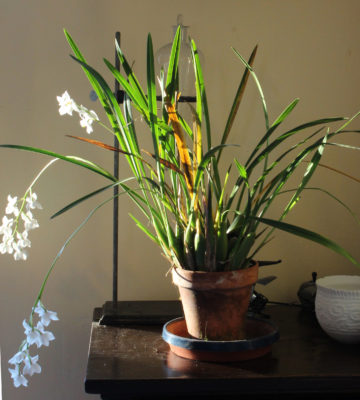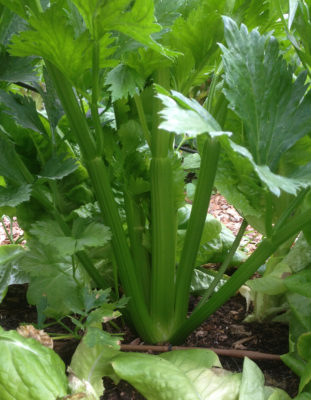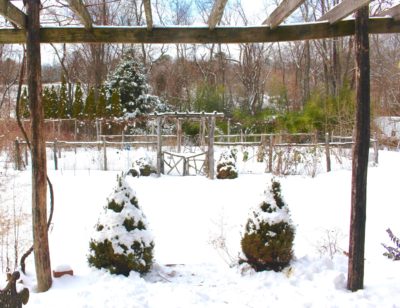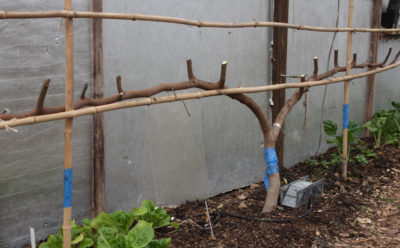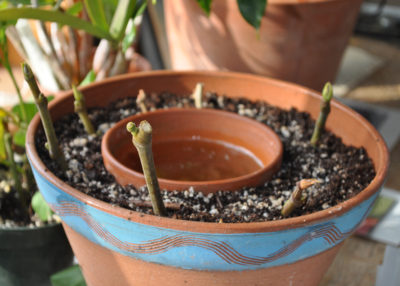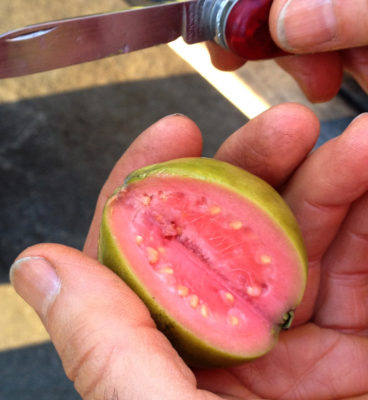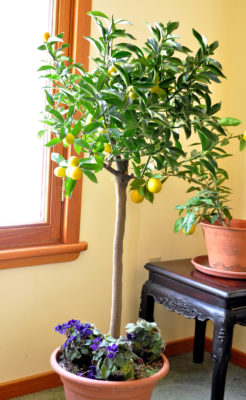A WINTER DAY WITH SPRING IN THE AIR
Spring Dreams
Looking out a window today, all I see is white, a thick blanket of snow covering the ground and howling winds periodically puff clouds of it swirling into the air. Still, I can feel the pull of spring. Perhaps it’s the bright sunlight. Couple that with the colorful gardening magazines and catalog strewn on the kitchen table, and how can I resist vicarious planting — by ordering plants instead.
David Austin roses, whose blooms have the look and fragrances of yesteryear (pastel colors and blowsy form), and the repeat blooming of pest-resistance of presentyear roses, are always a draw. Every year, new varieties are offered, some, I’m gad to see, that are cold-hardy to zone 4.
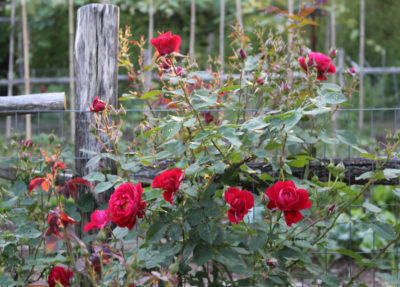
Rose, L. D. Braithwaite
And m–m-m-m, the thought of picking fresh, ripe sweet cherries is also enticing. No, no! I ordered and planted what was allegedly a self-fertile Compact Stella cherry tree seven years ago. It wasn’t compact and it has yet to bear a cherry. I tell others that sweet cherries are a poor bet around here because of winter cold, spring frosts, and various inset and disease pests. And, after that, even if fruits do develop, birds will likely eat them. I should have been listening when I dispensed that advice.
The cherry tree has one more season to prove it’s worth. If it doesn’t, I have a replacement plant (hardy orange, Citrus trifoliata) anxiously waiting in the wings.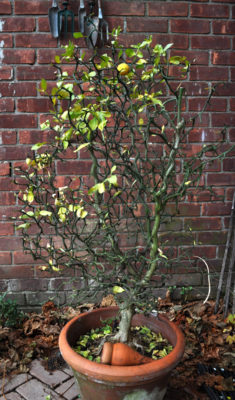
I’ve always wanted to plant a magnolia, of which there are many newer and older varieties, but where could I plant it? Now that I think of it, I did plant a magnolia last spring. It died. And a few years back, I planted a sweetbay magnolia (Magnolia virginiana) purchased on an impulse at a nursery a few years ago. I remember planting it, but not what happened to it, except that it’s no longer around.
The magnolia that I really want to plant is southern magnolia, Magnolia grandiflora. This large evergreen gracing many homes from Virginia southward with its large, glossy, dark green leaves and it’s large, lily-white, fragrant blossoms seems to politely call for a chair in its shade, a frosty mint julep on the armrest.
Problem is that southern magnolias are not hardy here — yet. I know of a gorgeous tree about an hour south of here and two varieties — Edith Pogue and Bracken’s Brown Beauty — are hardy below zero degrees F. It hardly gets below zero here these past few winters and, with global warming . . . ?
Yes, it is hard to keep my wits about me as spring approaches, and will be increasingly so as spring edges in. “I will not buy another sweet cherry tree, I will not buy another apricot tree (even more problematic), I will not buy another magnolia (yet), . . .”
Dorris, I’d Like To Meet You
Uh oh, another new variety of filbert from the breeding program at Oregon State University. This variety, Dorris, is, like some of its recent predecessors, immune to the eastern filbert blight that has for so long made filbert growing east of the Rockies unfeasible. They’re breeding blight-resistant filbert in Oregon because the blight fungus has made its way west.

Filbert nut harvest last fall
But eastern filbert blight is a capricious fungus, sometimes changing in a way that let’s it attack even “resistant” filberts. So I’m constantly cutting down diseased filberts and replanting “resistant” ones. One of the newest varieties, which will get a spot in the line of filberts that draws my eyes and footsteps along the edge of meadow, is Dorris.
Good luck Dorris.
Making Trees
Some trees and shrubs coming to my garden this year are going to be home-made, that is, created by me from seeds, cuttings, or grafts. To that end, I recently collected hackberry seeds as well as scions (for grafting) of persimmon, pear, and cornelian cherry, and packed them all away in an insulated box in my garage. I will deal with them in a few weeks.
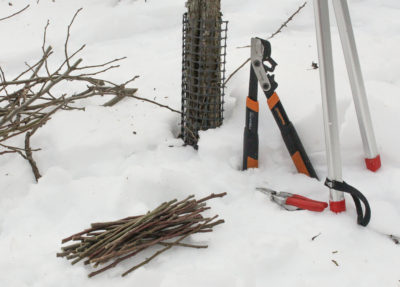
Gathering scionwood
Collecting scionwood for grafting segue nicely with pruning. From the prunings strews about on the ground, I cut and save one-year-old stems into foot-long sections.

